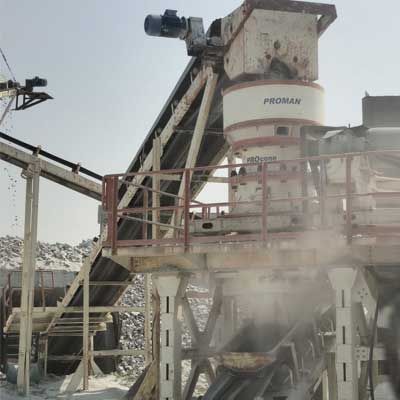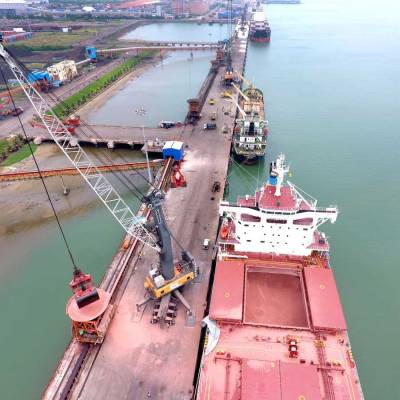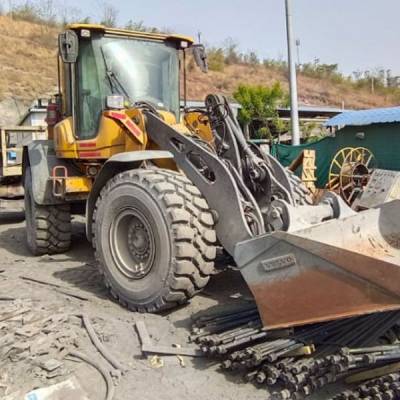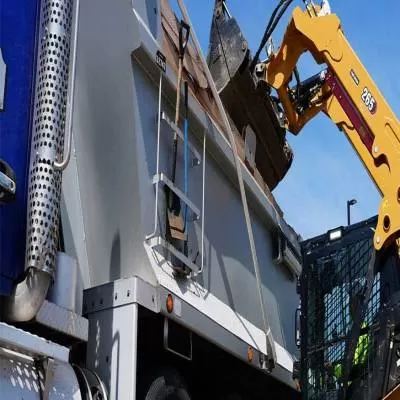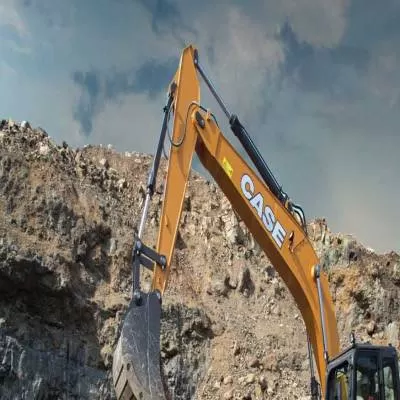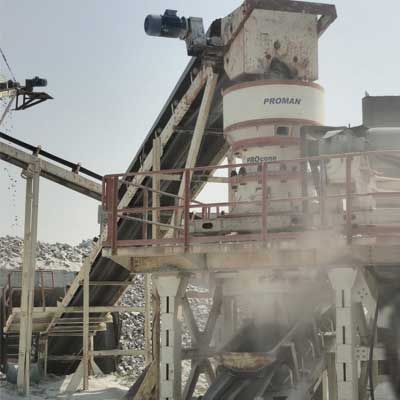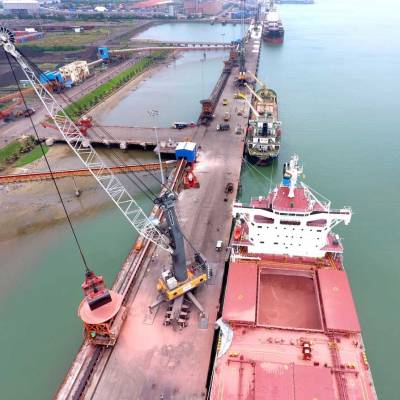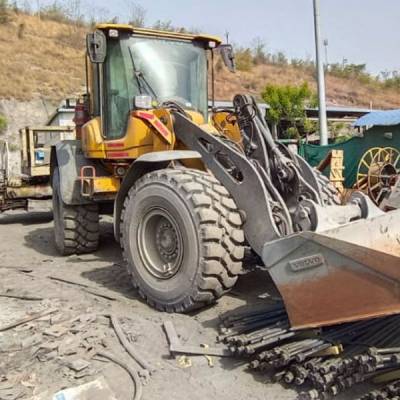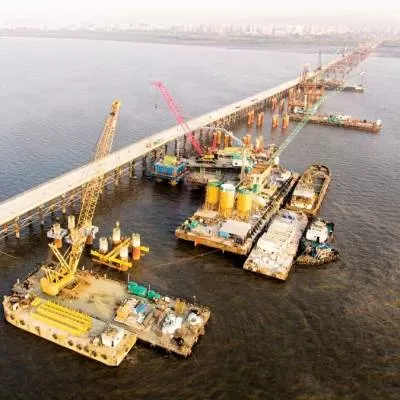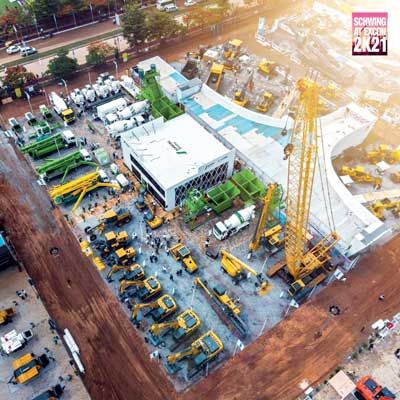
Handling Growth
Material handling equipment providers report varying growth rates depending on their sector of engagement.
'In 2016, we grew at 20-25 per cent against the industry expansion of 10-15 per cent,' says Pradeep Sharma, President, ACE Cranes. 'We expect to grow at 18-20 per cent this year.'
'Material handling equipment has seen a growth of 10 per cent while we have been growing at over 40 per cent YoY,' says Piyush Goyal, Managing Director, Kelley Material Handling Equipment India, a wholly owned subsidiary of Kelley Entrematic USA, the world's largest manufacturer of dock levellers.
'Last year was fantastic as the market for pick-n-carry cranes, slew cranes and forklifts grew by over 30 per cent,' says Ajay Mandahr, CEO, Escorts Construction Equipment. 'Growth was much higher in the first and two quarters; thereafter, demonetisation had some negative impact, then growth picked up again in the last quarter.'
'Demand for 250-500 tonne tyre-mounted cranes is sluggish and limited to the metro sector,' says Praveen Sharma, Managing Director, ABC Infra Equipment.
'We are seeing 2-3 per cent growth in 2017 after two flat years,' says Jaideep Bauskar, Product Head, Warehouse Equipment, Voltas.
'Outright purchases are growing slowly as the majority of forklift users in the industrial, warehousing and logistics sectors are opting for equipment on rent,' says Mahesh Kumar, Manager Sales & Marketing, Nichiyu Forklifts.
'At most, we expect 10-12 per cent growth this year.'
'We have seen a significant thrust in material handling recently, especially for safe and reliable products at work sites and equipment facilitating vertical stacking and palletisation,' says Jasmeet Singh, Head-Corporate Communications and External Relations, JCB India.
Growth drivers
JCB telehandlers, skid steer loaders and super loaders typically find use in construction, process industries and agricultural logistics, according to Singh. In particular, telehandlers are deployed in urban construction sites and wherever height and reach are important. Attachments making the machine more versatile include the general-purpose shovel, heavy-duty forks, bucket with grab, crane hook-fork mounted, grain bucket, power grab, man platform and drum handlers. Skid steers with a compact size and unique zero-turning radius feature are useful for solid waste management and construction where areas are narrow and restricted. Super loaders based on the 2DX platform and with various attachments like multiple buckets, bagasse dozer, pallet fork and bale grabber help where a loader with a high dump height is needed such as pallet handling, coal handling, dozer levelling, etc.
Kelley India has seen growth on the back of the healthy expansion of the modern warehousing and e-commerce sectors, offline retail, manufacturing, FMCG and the dairy sector, all of which have been presenting good demand for its equipment line-up including high-volume low-speed (HVLS) fans of size 8' to 24' diameter, dock levellers, vehicle restraints, dock seals, dock shelters and impact-resistant overhead door products. Of these, HVLS fans are the fastest growing for offering advantages like a single 24' diameter fan covering a facility area of up to 30,000 sq ft depending upon site conditions, eliminating the need for a large number of wall-mounted, noisy, energy-consuming fans.
'Hiring companies constitute 60 per cent of our pick-n-carry, crawler crane and forklift business; we believe this strong segment represents the shift across industries towards hiring machinery as opposed to investing,' says Sharma. 'Companies implementing road and irrigation sector projects are our other big crane customers.'
Interestingly, Sharma also reports seeing healthy demand for pick-n-carry cranes and truck cranes from steel handling yards and ONGC installations, as a result of the policy decision to debar the use of machines that are more than seven years old.
'Infrastructure - especially small companies implementing jobs - and industry are driving demand for pick-n-carry cranes and forklifts respectively,' says Mandahr.
Future prospects
'We expect material handling equipment sales to rise in tandem with the revival of the infrastructure sector,' says Anil Bhatia, Vice President, Sales & Marketing, TIL. In particular, he expects opportunities for cranes from the Rs 16 lakh crore that the National Highways Authority of India proposes to invest in road projects over the next five years.
According to Sharma, whereas most of the present demand for pick-n-carry cranes is for 14 tonne and 16 tonne machines, ACE cranes is ready with the next generation line-up of 16-20 tonne capacity, which may become more popular as the pace of road construction picks up.
'We expect industry growth rates of 11-12 per cent for FY18' says Mandahr. In particular, he expects new plant erection, low-cost housing, metro, smart city projects and the windmill sector to drive pick-n-carry cranes and slew cranes. Irrigation projects, road construction and ports will play a big role in loaders, backhoes and pick-n-carry cranes.
'We are starting to get a few inquiries for upcoming infrastructure projects, refinery and cement sector expansions but expect things to go slow in 2017 because about 800 large machines deployed in a refinery project in Gujarat, which is now nearing completion, are making their way back into circulation. So this idle capacity first has to be taken up,' says Sharma of ABC Infra Equipment. In view of upcoming infrastructure projects, he expects demand for 400 tonne and above cranes to increase as India has limited numbers in circulation.
The steel sector is not seeing much growth, adds Sharma; however, ABC Infra Equipment is proud to announce the arrival of India's first Genie SX 150 boom lift with platform height of 152 ft and lifting capacity of 340 kg, to be first deployed in a steel plant. 'This will further strengthen our fleet of 85 boom lifts,' he adds. 'While 90 per cent of our boom lift fleet is from JLG, we have added a few big booms from Genie in the past three years. At ConExpo in Las Vegas earlier this year, we got great insights about Genie's quality products and decided to go ahead with the purchase.'
Long-term port modernisation, new port development, port-hinterland connectivity and coastal community development will increase demand for port and construction equipment as initiatives gather steam, says Bhatia. In particular, the reach stacker market, driven by the containerisation and palletisation of inland freight movement, will benefit from the Sagarmala project and the development of dedicated freight corridors. Mining, oil, steel, cement and metro projects will also boost the material handling industry.
Demand for forklifts will depend on uptake by ports, inland container depots and container freight stations, the steel and cement sectors, and construction companies using these for handling big concrete girders, concrete and steel blocks, steel beams, steel plates, etc, on site.
Industry wishlist
While a lot of international companies have set up shop in India to deliver state-of-the-art equipment, much equipment is imported in view of the cost and lead time advantage. Local dedicated facilities for engineering and manufacturing this equipment are absent, says Rajiv Agarwal, CEO & Managing Director, Essar Ports. Obviously, this is not the ideal state. In his view, there is a need for suitable incentives and infrastructure to realise the Make in India initiative to bring this technology and engineering prowess to our country, especially to fulfil the need for high-capacity unloaders, regasification system for LNG consisting of vapourisers, unloading arms for liquid handling, etc.
Greater awareness will help push the use of specialised equipment. 'In India, our key challenge was to educate customers about the latest technologies such as Lambda beam design, robotically welded chassis, single push button operation, easy clean pit, lug-type hinges and high-density steel chequered platforms with no joints in our dock leveller,' says Goyal. Customers had to be informed that all these and more can enhance productivity and safety, especially when the Kelley dock leveller is used in combination with a forklift, as well as boost reliability and operational ease, and lower maintenance costs, resulting in a low life-cycle cost. 'Thereafter, we emphasise customer engagement with the Kelley team at the inception stage to ensure the customer installation is right the first time.'
Material Handling in Ports
Change is in the air at the seashore with Indian ports presenting good demand for modern material handling equipment. 'With industry moving towards the requirement of higher parcel sizes and lower turnaround time to achieve economies of scale, ports across the globe are catering to vessels needing deeper drafts and higher-capacity material handling equipment that can provide productivity of more 100,000 tonne per day,' says Rajiv Agarwal, CEO & Managing Director, Essar Ports. 'So now, bulk handling facilities in ports consist of gantry cranes, high-capacity conveyor systems, stacker and reclaimer machines, high-speed wagon loaders and wagon tippler machines. The entire navigation and cargo evacuation facilities are integrated for the seamless flow of information to minimise the time between process handover. With this equipment, ports like Essar's 140-mmtpa capacity facilities can be benchmarked with the best in the industry.'
'We expect to see good demand for slew cranes in construction and maintenance at ports in the next two to three years because ports is a thrust area for the government,' says Ajay Mandahr, CEO, Escorts Construction Equipment. Ports under revamp or bulk extensions will additionally use loaders, backhoes, pick-n-carry cranes.
'Most ports, container freight stations, inland container depots and container train operators will require the latest technology, and efficient and productive equipment such as the Hyster TIL ReachStacker,' affirms Anil Bhatia, Vice President, Sales & Marketing, TIL. This machine features 'power on demand' and 'regenerative cycle' for low energy consumption and high performance, and can help maximise the utilisation of space on container terminals with its outstanding manoeuvrability, superior handling speeds and unrestricted stacking capabilities. Additionally, TIL and Hyster-Yale Asia-Pacific's exclusive partnership covers the sales and service of high-capacity forklift trucks and warehousing solutions and empty and laden container handlers to customers in India, Nepal and Bhutan.
Where can material handling providers pitch their line-ups? According to Jaideep Bauskar, Product Head, Warehouse Equipment, Voltas, 'A new terminal at JNPT terminal, container freight stations at Chennai, Mundhra, etc, and expansions in container-handling facilities at Visakhapatnam, Gangavaram, Tuticorin, etc, will present demand for rubber-tired gantry cranes, Gottwald cranes, ship-to-shore cranes, rail-mounted gantry cranes and reach stackers. Additionally, ports on the eastern coast will see demand for grab handlers and continuous material loaders used for bulk material.'
- Charu Bahri
To share your insights on the market for Material Handling Equipment, write in at feedback@ConstructionWorld.in
The biggest opportunities for material handling equipment, with a special focus on the ports sector. Material handling equipment providers report varying growth rates depending on their sector of engagement. 'In 2016, we grew at 20-25 per cent against the industry expansion of 10-15 per cent,' says Pradeep Sharma, President, ACE Cranes. 'We expect to grow at 18-20 per cent this year.' 'Material handling equipment has seen a growth of 10 per cent while we have been growing at over 40 per cent YoY,' says Piyush Goyal, Managing Director, Kelley Material Handling Equipment India, a wholly owned subsidiary of Kelley Entrematic USA, the world's largest manufacturer of dock levellers. 'Last year was fantastic as the market for pick-n-carry cranes, slew cranes and forklifts grew by over 30 per cent,' says Ajay Mandahr, CEO, Escorts Construction Equipment. 'Growth was much higher in the first and two quarters; thereafter, demonetisation had some negative impact, then growth picked up again in the last quarter.' 'Demand for 250-500 tonne tyre-mounted cranes is sluggish and limited to the metro sector,' says Praveen Sharma, Managing Director, ABC Infra Equipment. 'We are seeing 2-3 per cent growth in 2017 after two flat years,' says Jaideep Bauskar, Product Head, Warehouse Equipment, Voltas. 'Outright purchases are growing slowly as the majority of forklift users in the industrial, warehousing and logistics sectors are opting for equipment on rent,' says Mahesh Kumar, Manager Sales & Marketing, Nichiyu Forklifts. 'At most, we expect 10-12 per cent growth this year.' 'We have seen a significant thrust in material handling recently, especially for safe and reliable products at work sites and equipment facilitating vertical stacking and palletisation,' says Jasmeet Singh, Head-Corporate Communications and External Relations, JCB India. Growth drivers JCB telehandlers, skid steer loaders and super loaders typically find use in construction, process industries and agricultural logistics, according to Singh. In particular, telehandlers are deployed in urban construction sites and wherever height and reach are important. Attachments making the machine more versatile include the general-purpose shovel, heavy-duty forks, bucket with grab, crane hook-fork mounted, grain bucket, power grab, man platform and drum handlers. Skid steers with a compact size and unique zero-turning radius feature are useful for solid waste management and construction where areas are narrow and restricted. Super loaders based on the 2DX platform and with various attachments like multiple buckets, bagasse dozer, pallet fork and bale grabber help where a loader with a high dump height is needed such as pallet handling, coal handling, dozer levelling, etc. Kelley India has seen growth on the back of the healthy expansion of the modern warehousing and e-commerce sectors, offline retail, manufacturing, FMCG and the dairy sector, all of which have been presenting good demand for its equipment line-up including high-volume low-speed (HVLS) fans of size 8' to 24' diameter, dock levellers, vehicle restraints, dock seals, dock shelters and impact-resistant overhead door products. Of these, HVLS fans are the fastest growing for offering advantages like a single 24' diameter fan covering a facility area of up to 30,000 sq ft depending upon site conditions, eliminating the need for a large number of wall-mounted, noisy, energy-consuming fans. 'Hiring companies constitute 60 per cent of our pick-n-carry, crawler crane and forklift business; we believe this strong segment represents the shift across industries towards hiring machinery as opposed to investing,' says Sharma. 'Companies implementing road and irrigation sector projects are our other big crane customers.' Interestingly, Sharma also reports seeing healthy demand for pick-n-carry cranes and truck cranes from steel handling yards and ONGC installations, as a result of the policy decision to debar the use of machines that are more than seven years old. 'Infrastructure - especially small companies implementing jobs - and industry are driving demand for pick-n-carry cranes and forklifts respectively,' says Mandahr. Future prospects 'We expect material handling equipment sales to rise in tandem with the revival of the infrastructure sector,' says Anil Bhatia, Vice President, Sales & Marketing, TIL. In particular, he expects opportunities for cranes from the Rs 16 lakh crore that the National Highways Authority of India proposes to invest in road projects over the next five years. According to Sharma, whereas most of the present demand for pick-n-carry cranes is for 14 tonne and 16 tonne machines, ACE cranes is ready with the next generation line-up of 16-20 tonne capacity, which may become more popular as the pace of road construction picks up. 'We expect industry growth rates of 11-12 per cent for FY18' says Mandahr. In particular, he expects new plant erection, low-cost housing, metro, smart city projects and the windmill sector to drive pick-n-carry cranes and slew cranes. Irrigation projects, road construction and ports will play a big role in loaders, backhoes and pick-n-carry cranes. 'We are starting to get a few inquiries for upcoming infrastructure projects, refinery and cement sector expansions but expect things to go slow in 2017 because about 800 large machines deployed in a refinery project in Gujarat, which is now nearing completion, are making their way back into circulation. So this idle capacity first has to be taken up,' says Sharma of ABC Infra Equipment. In view of upcoming infrastructure projects, he expects demand for 400 tonne and above cranes to increase as India has limited numbers in circulation. The steel sector is not seeing much growth, adds Sharma; however, ABC Infra Equipment is proud to announce the arrival of India's first Genie SX 150 boom lift with platform height of 152 ft and lifting capacity of 340 kg, to be first deployed in a steel plant. 'This will further strengthen our fleet of 85 boom lifts,' he adds. 'While 90 per cent of our boom lift fleet is from JLG, we have added a few big booms from Genie in the past three years. At ConExpo in Las Vegas earlier this year, we got great insights about Genie's quality products and decided to go ahead with the purchase.' Long-term port modernisation, new port development, port-hinterland connectivity and coastal community development will increase demand for port and construction equipment as initiatives gather steam, says Bhatia. In particular, the reach stacker market, driven by the containerisation and palletisation of inland freight movement, will benefit from the Sagarmala project and the development of dedicated freight corridors. Mining, oil, steel, cement and metro projects will also boost the material handling industry. Demand for forklifts will depend on uptake by ports, inland container depots and container freight stations, the steel and cement sectors, and construction companies using these for handling big concrete girders, concrete and steel blocks, steel beams, steel plates, etc, on site. Industry wishlist While a lot of international companies have set up shop in India to deliver state-of-the-art equipment, much equipment is imported in view of the cost and lead time advantage. Local dedicated facilities for engineering and manufacturing this equipment are absent, says Rajiv Agarwal, CEO & Managing Director, Essar Ports. Obviously, this is not the ideal state. In his view, there is a need for suitable incentives and infrastructure to realise the Make in India initiative to bring this technology and engineering prowess to our country, especially to fulfil the need for high-capacity unloaders, regasification system for LNG consisting of vapourisers, unloading arms for liquid handling, etc. Greater awareness will help push the use of specialised equipment. 'In India, our key challenge was to educate customers about the latest technologies such as Lambda beam design, robotically welded chassis, single push button operation, easy clean pit, lug-type hinges and high-density steel chequered platforms with no joints in our dock leveller,' says Goyal. Customers had to be informed that all these and more can enhance productivity and safety, especially when the Kelley dock leveller is used in combination with a forklift, as well as boost reliability and operational ease, and lower maintenance costs, resulting in a low life-cycle cost. 'Thereafter, we emphasise customer engagement with the Kelley team at the inception stage to ensure the customer installation is right the first time.' Material Handling in Ports Change is in the air at the seashore with Indian ports presenting good demand for modern material handling equipment. 'With industry moving towards the requirement of higher parcel sizes and lower turnaround time to achieve economies of scale, ports across the globe are catering to vessels needing deeper drafts and higher-capacity material handling equipment that can provide productivity of more 100,000 tonne per day,' says Rajiv Agarwal, CEO & Managing Director, Essar Ports. 'So now, bulk handling facilities in ports consist of gantry cranes, high-capacity conveyor systems, stacker and reclaimer machines, high-speed wagon loaders and wagon tippler machines. The entire navigation and cargo evacuation facilities are integrated for the seamless flow of information to minimise the time between process handover. With this equipment, ports like Essar's 140-mmtpa capacity facilities can be benchmarked with the best in the industry.' 'We expect to see good demand for slew cranes in construction and maintenance at ports in the next two to three years because ports is a thrust area for the government,' says Ajay Mandahr, CEO, Escorts Construction Equipment. Ports under revamp or bulk extensions will additionally use loaders, backhoes, pick-n-carry cranes. 'Most ports, container freight stations, inland container depots and container train operators will require the latest technology, and efficient and productive equipment such as the Hyster TIL ReachStacker,' affirms Anil Bhatia, Vice President, Sales & Marketing, TIL. This machine features 'power on demand' and 'regenerative cycle' for low energy consumption and high performance, and can help maximise the utilisation of space on container terminals with its outstanding manoeuvrability, superior handling speeds and unrestricted stacking capabilities. Additionally, TIL and Hyster-Yale Asia-Pacific's exclusive partnership covers the sales and service of high-capacity forklift trucks and warehousing solutions and empty and laden container handlers to customers in India, Nepal and Bhutan. Where can material handling providers pitch their line-ups? According to Jaideep Bauskar, Product Head, Warehouse Equipment, Voltas, 'A new terminal at JNPT terminal, container freight stations at Chennai, Mundhra, etc, and expansions in container-handling facilities at Visakhapatnam, Gangavaram, Tuticorin, etc, will present demand for rubber-tired gantry cranes, Gottwald cranes, ship-to-shore cranes, rail-mounted gantry cranes and reach stackers. Additionally, ports on the eastern coast will see demand for grab handlers and continuous material loaders used for bulk material.' - Charu Bahri To share your insights on the market for Material Handling Equipment, write in at feedback@ConstructionWorld.in


